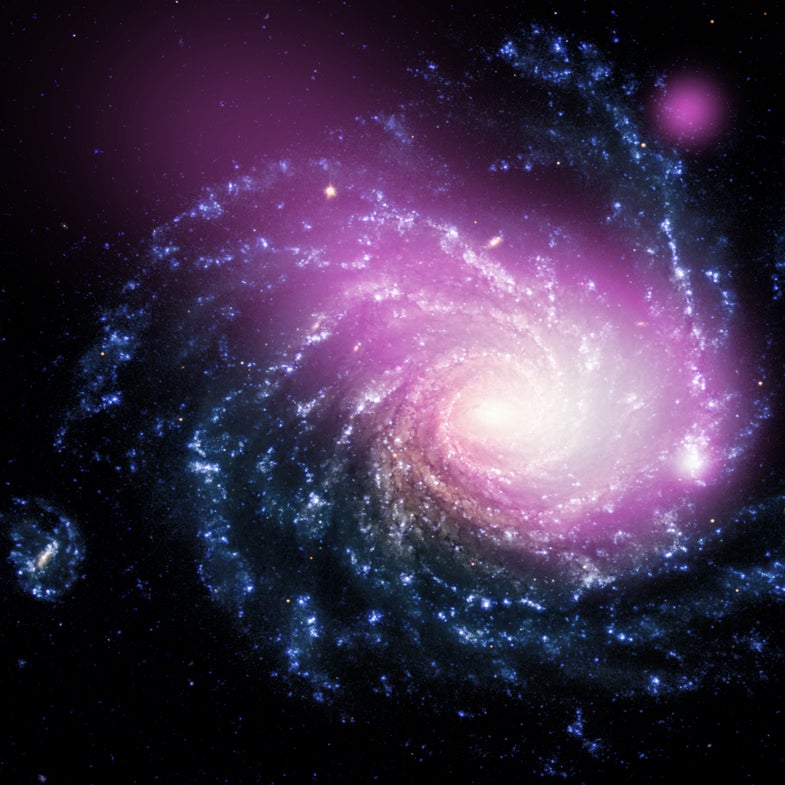Big Pic: Dwarf Galaxy Collides With Big Spiral Galaxy KABOOM Ha Ha Ha!
NASA noticed a cloud of six-million-degree gas and was like, what? (We're paraphrasing.)

NASA’s Chandra x-ray observatory picked up something odd and powerful in a galaxy far, far away: an event almost like a sonic boom that triggered an enormous release of superheated gas. NASA thinks the boom was caused by something we’ve never seen before: the collision of a dwarf galaxy with a much larger spiral galaxy. (Note: there’s no sound in space, this collision did not actually make a “KABOOM” noise, we know, we know.)
Chandra’s telescopes picked up the heat before anything else; that cloud of superheated gas is around six million degrees Fahrenheit, so “superheated” is, if anything, an understatement. Then scientists began putting the puzzle pieces together. The gas formed a comet-like shape, indicating the motion of the dwarf galaxy as it collided with the larger spiral galaxy. The spiral galaxy is about 60 million light-years from Earth, named NGC 1232, as these things are. At the head of that comet-ish shape are a bunch of very bright points and strong x-ray emission. NASA thinks that’s the creation of super-powerful stars, triggered by the collision.
The collision itself is estimated to continue for about 50 million years, with the hot gas continuing to exude x-rays for possibly hundreds of millions of years after that. It’s of significant interest to NASA as it could help them understand how the universe grows due to the collision of enormous galaxies like these two. Read more about it here.